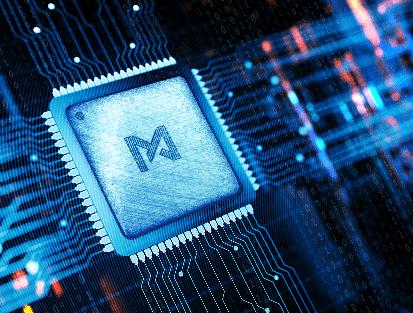
2 minute read
ANALOG COMPUTING FOR EDGE AI


Advertisement

By Sivaram Durai, 3rd Year
Analog computers were the dominant computers for many centuries, enabling the prediction of eclipses, the tracking of tides, and the guidance of anti-aircraft guns. However, the development of solid-state transistors led to the rise of digital computers, which have since become ubiquitous. But today, a perfect storm of factors is setting the scene for a resurgence of Analog technology.
AI compute is mostly matrix-vector multiply and add operations. The problem with digital processors is that they spend time and energy fetching weight values from memory instead of performing matrix multiplication. This can significantly slow down the performance of the DNN and increase energy consumption, especially when dealing with large and complex neural networks. Even a simple task like detecting an object in the camera can bog down a modern processor. Finally, there are some fundamental physical challenges to further miniaturizing the size of the transistor (Moore’s law saturation).
Analog computing is a breakthrough technology that delivers better performance and power efficiency than the digital technology that modern computers use. Analog computing enables high-speed and low-power computation of matrix math, building blocks of AI. Here the math is done using electrical currents inside flash memory banks. This eliminates the major bottleneck of loading data into memory and sending it to a processing unit. The key idea is to eliminate those read and write access and to perform computing directly in the memory.
Developed by a US-based start-up Mythic, this processor is called Mythic Analog Matrix Processor, the first commercial edge-AI processor featuring inmemory computing. It is capable of running multi-million neural network models. Fabricated in a 40nm CMOS process node, M1108 Mythic AMP can perform up to 35 TOPS (trillion operations per second) of AI computing taking up just 4 Watts of power. If we compare mythic to NVIDIA Xavier Ai SoC, an
Edge Ai processor with a conventional digital compute engine delivers up to 32 TOPS per 30 Watts means about one TOP per Watt. Hence, Mythic claims better performance at about one-tenth of the power of its digital counterpart.
Mythic has repurposed digital NAND flash storage cells as variable resistors. A single flash cell multiplies two values together, voltage times conductance. To run an artificial neural network, they first write all the weights to the flash cells as each cell’s conductance. Then input the activation values (as the voltage). The resulting current is the product of voltage times conductance, which is activation times weight. The current from each multiplication adds together, completing the matrix multiplication. In practice, you would need a bunch of ADCs and DACs to apply inputs to these resistors and read the outputs. This processor perfectly fits a wide range of applications like smart homes, autonomous driving, video analytics, and augmented reality and in edge devices where latency and power consumption matters the most.
It is important to note that analog computing research continues to advance, paving the way for the development of sophisticated AI applications capable of solving complex problems efficiently and effectively.


Mythic Analog Matrix Processors (Mythic AMP™) offer huge advantages in power, performance, and cost. They lower the barriers to innovation, bringing powerful AI solutions to the edge











